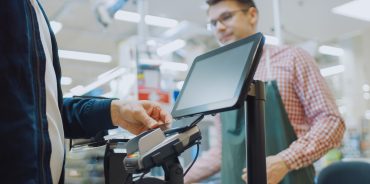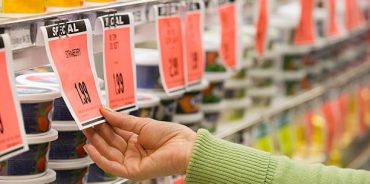The most powerful growth driver in retail: it’s not what you expect
A little over a year ago, McKinsey & Company outlined 10 key trends that they believe will shape the future of grocery over the coming years. And while some of those factors sit outside of the purview of either retailers or brands – the “return of restaurants”, for instance – many remain at least partially within their control.
The main reason for that sense of ownership is that so many of these issues are linked directly to customer behaviours. Alongside factors like online grocery and advanced analytics, for example, McKinsey’s list includes themes such as “sustainability”, “value”, “health and organic”, “convenience”, and “quality”, all things that anyone familiar with our RPI series will know can have an outstated influence on where customers choose to shop.
As insightful as this list in terms of highlighting the things that retailers and their CPG partners need to have a good handle on over the next few years, I’d argue that there’s also something missing: an 11th trend that brings many others together under one umbrella. That overarching issue is collaboration, and more specifically, shopper first collaboration – something that I believe is now the most powerful driver of growth in retail. Now is the time for CPGs and retailers join forces to better serve customers, instead of fighting blind.
Addressing common challenges, achieving better results
For a long time, the balance of power in the relationship between retailers and CPGs sat firmly with the former, with the larger store chains in particular being able to exert a significant amount of power and influence over their suppliers. In recent times, that dynamic has undoubtedly softened, one-sided dialogues giving way to more collaborative, transparent, and customer-centric initiatives.
Today, there is a stronger argument for that joined-up approach to decision making than ever before. Just as retailers are facing an increased cost to serve as a result of the boom in online grocery, CPGs have found their own operations disrupted by an increasingly unpredictable global supply chain. And while the individual challenges they face are unique, both parties are united by the need to improve their profitability and adapt to fast-moving shopper behaviours.
Achieving those goals together is undeniably easier than it is to do so in isolation. Insight-driven, shopper first collaboration can aid with everything from demand forecasting and category management through to personalisation – fuelling efficiency, driving sales, and helping CPGs to ensure that they have the right products in the right place at the right time. With the right approach, all of those things can make a major contribution to profitability.
Shared knowledge goes a long way in helping to understand shifting customer needs, too. While retailers might know their shoppers in granular detail, CPGs can complement that knowledge with insights into market-wide behaviours, category trends, and bespoke research – all vital in the race to stay ahead of shifting consumer behaviours.
The rise and rise of the win-win-win model
In our recent report looking at the future of collaboration between retailers and CPGs, 80% of grocery industry execs said they expect collaboration to continue to increase in the future – testament to the value that it delivers. But while retailers and brands win by working together, there’s another party that benefits here too: the shopper.
As retailers and CPGs have moved from cooperation to collaboration, what has become increasingly clear is that the priority needs to be on putting the customer at the heart of their decisions.
Doing so not only helps to keep both parties true to what matters most in areas like category management, pricing, and communications, it also helps to remove any ambiguity about the drivers of success: the overall impact on the customer serving as a more effective metric than any individual or channel-specific KPIs ever could.
The result is what we refer to as a “win-win-win” model, one in which every party stands to gain. Retailers benefit from the expertise of their suppliers and the knowledge that those partners are truly invested in doing the right thing for their customers, brands enjoy better insight into those shoppers, and the ability to communicate with them in a personalised and engaging way, and customers themselves receive better and more relevant grocery experiences.
Helping everyone deliver at their best
The other advantage to a shopper first approach to collaboration is – as alluded to above – that it enables retailers and CPGs to tap into each other’s dedicated expertise. For brands, that means gaining access to a rich pool of customer data that can help them refine their strategies and engage on a one-to-one basis. For retailers, they get access to a wealth of category expertise and the benefit of a national perspective from their partners.
Added to that is the opportunity to bring in the unique expertise of data scientists. While there is already inherent value to the data and insights that retailers and CPGs bring by working together, data science can augment that even further – applying time-tested techniques and emerging methodologies to help both parties realise a new level of value from their information.
This is about more than just theory, as well. From creating ranges that better meet customer needs, navigating out-of-stocks with more cohesive forecasting, or understanding the true effectiveness of trade promotions, shopper first collaboration has a growing number of practical applications that can help retailers and CPGs build smarter, more sustainable businesses.
And so as crucial as issues like ecommerce, convenience, and value may be, the truth is that whatever the future of the grocery industry holds, there’s only one way to adapt to it successfully: together, and with the customer’s changing needs always front of mind.
TOPICS
RELATED PRODUCTS
Amplify Customer understanding to create strategies that drive results
Customer First solutionsThe latest insights from our experts around the world
Innovating with the Ecosystem: Why Collaboration is the Key to Retail’s Future



